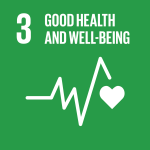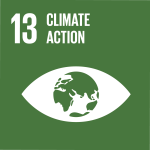This story was first published by UNDP Sri Lanka on Exposure here.
About the author: Dr. Buddhika Hapuarachchi currently serves as the Climate Change and Environment Team Leader for UNDP in Sri Lanka and has over 18 years of experience in climate change adaptation, disaster risk management, integrated water resource management, climate information and advisory dissemination
GETTING BACK ON TRACK
The world is struggling to get back on track after the severe effects of COVID-19. Almost 10 months down the line, most countries are still grappling with managing the spread of the disease while the rest, like Sri Lanka, are dealing with the grave economic and social consequences that the pandemic brought. While the pandemic gave rise to much discourse on how our development focus should shift to account for such public health emergencies effectively, one aspect that’s also critical is centering disaster risk reduction.
"Incontestably, our future and our development work depend on preemptive, holistic and effective disaster risk reduction and management."
My personal experience in working in disaster risk reduction and management in Sri Lanka over the years has been proof of this.
CLIMATE REALITY
As we all know, climate change is our current reality and we’re all personally affected by it every day. Especially in Sri Lanka, errant rainfall patterns destroy the food we eat, and the increase in the temperature affects our healthy living.
The effects of the climate crisis will continue to worsen, along with the risks of impending disasters and more pandemics. Research has found that climate change is making outbreaks of diseases like the coronavirus more common. The loss in biodiversity and the encroachment of forests and wildlands are bringing people closer to potential sources of viral diseases and increases the propensity of spreading due to congestion. Simultaneously, disasters don’t stop for pandemics either.
This was evident during the height of COVID-19 earlier this year. Here at home in Sri Lanka, the districts that were at high risk of spreading the disease—Colombo, Gampaha, Kalutara, Puttalam & Ratnapura—coincided with the districts that were most vulnerable to the South-West monsoon.
So, while UNDP was supporting the Government with the pandemic, the Climate Resilient Integrated Water Management Project (CRIWMP), supported by the global Green Climate Fund, diverted its efforts to address the monsoon risks.
The team set out to ensure that disaster preparedness is on point, should there be a need for evacuations due to landslides and flashfloods. Under the strict curfew laws, the team mapped the most vulnerable Divisional Secretariat Divisions within these Districts, organized a virtual national level consultation to effectively undertake the disaster risk management issue at hand along with coronavirus considerations, created operational guidelines based on the directives from the Ministry of Health and the Disaster Management Center for local level officers in all three languages, facilitated the onboarding of extra staff by liaising with the Red Cross for volunteers and carried out a communications outreach program to inform the officers and communities.
CHANGING DYNAMICS OF POTENTIAL RISKS
While catering to such emergencies is part and parcel of the objectives of the Climate and Environment team at UNDP, the fact remains that the changing dynamics of the potential risks our communities are at are novel to us and the country.
The threats are going to compound and the said risks will require significant recovery time, and finances if we do not face them constructively. We learned this with the Tsunami back in 2004 and with the COVID-19 outbreak today. Centering disaster risk reduction and risk management in our work, be it in environment or governance, is essential to ensuring that we’re safer and that our development work is sustainable.
PREVENTION AND PREPAREDNESS
Therefore, collective action to avoid creating new risks, systematically reducing exisitng risks, strengthening the capacity of our people and systems to withstand and recover from shocks and events, policy and legislative changes, multisectoral collaboration and innovative financing approaches must be at the forefront of our efforts.
And as COVID-19 has shown us, including pandemic and epidemic prevention and preparedness into our disaster risk management strategies is also essential.
Be it, poverty reduction, climate change adaptation, energy, water resource management, biodiversity, land use, agriculture and the many sectors in between, disaster risk reduction and management, and better disaster risk governance must be at the heart of what we do. Working alongside the Disaster Management Center and various other government agencies in my time at Practical Action and other development agencies, it has been proven that we must be constantly evaluating our strategies to center disaster risk management in all aspects of our development work.
THE FUTURE OF DEVELOPMENT IS IN DISASTER RISK REDUCTION & MANAGEMENT
The coming years will present us with many novel developmental challenges and will catch us off-guard.
"But our way forward is clear - transformative development strategies that encompass disaster preparedness, risk reduction, management, and governance in all its sectors and innovative development financing methods are our solutions."


